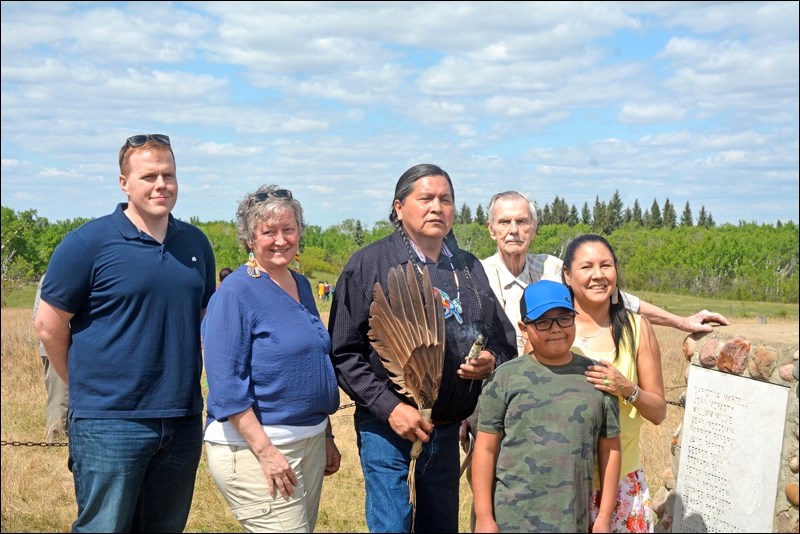A number of community members gathered at the old Government House site last Friday for a walk to commemorate those who lie at the site’s cemetery.
The event was led by local lawyers Eleanore Sunchild and Ben Feist and Living Sky School Division Learning Consultant Sherron Burns. Among others in attendance were local historian Don Light and Alvin Baptiste, students from Sakewew High School and news media.
The cemetery site has graves of students, and of family members of Rev. Edward Matheson, who was at one point was the school’s principal.
The site is located on land owned by former resident Wayne Kopp, who granted permission for the group to host a walk. The oblates, who own land that allows easiest access to the site, also granted permission.
The site recently gained status as a municipal heritage site. Burns, Sunchild and Feist are seeking provincial designation of the site.
Baptiste and Light gave some words. Baptiste said he is a relative of Annie Peyachew buried at the site.
Baptiste thanked everyone who participated in the walk for “[honouring] the students that passed on.”
“There’s a lot of people who aren’t aware of the gravesite here,” adding he didn’t know of the exact location of the site until Friday.
“It’s an honour to be here,” Baptiste said.
Baptiste also mentioned plans for a memorial feast and pipe ceremony on behalf of those buried at the site.
Sunchild and Light had a disagreement about the history surrounding the site.
Light said the people that went to the industrial school “were treated extremely well, almost like royalty.” He said people came off various reserves from living in tents to the school, featuring a building with beds, blankets and three meals a day.
Light said not all such schools were like the one near Battleford.
Sunchild mentioned oral tradition in which students from the school witnessed the hangings of eight men in Battleford.
Light said there weren’t students at the school at the time of the hanging. Another member of the historical society said the school would have reopened in 1886.
“Given the attitude toward First Nations people at the time I would beg to differ that they were treated like kings,” Sunchild said. “Our people were not treated like royalty, and never have been since this country has been settled.”
Sunchild said the purpose of the schools was to “kill the Indian in the child” and assimilate them.
Light said he went to a residential school and spoke Cree.
Sunchild, who works with residential school claims, said in her experience she’s found residential schools to be all bad.
Baptiste emphasized public awareness of the cemetery site, and expects many people to come forward and recognize the importance of such gravesites.
The group, along with Light, gathered for photos afterwards.




